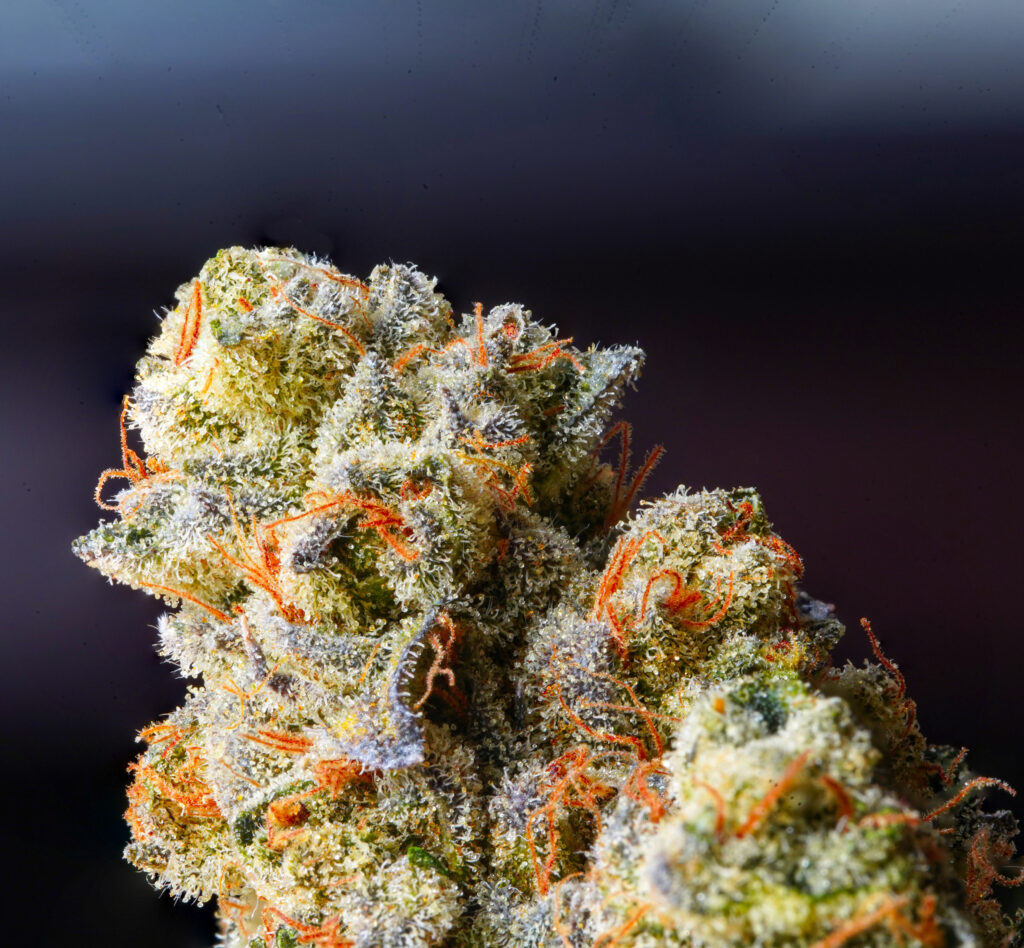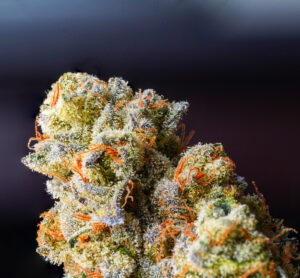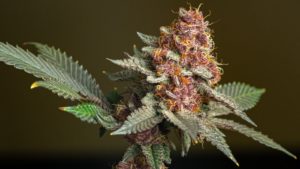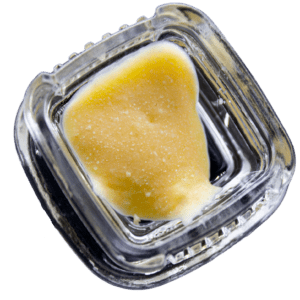

Exploring the Most Exciting Rare Cannabinoids in 2025
The cannabis industry is evolving rapidly, with rare cannabinoids gaining increasing attention for their unique effects and potential therapeutic applications. Beyond the well-known THC and CBD, these lesser-known compounds are making waves in research and product development. In this guide, we’ll explore four trending rare cannabinoids: THCV, CBC, CBDV, and THCP—what they are, their benefits, and why they’re worth knowing about.
1. Tetrahydrocannabivarin (THCV): The Motivational Cannabinoid
Overview: THCV is a naturally occurring cannabinoid similar in structure to THC but with vastly different effects. It’s often referred to as the “sports car” of cannabinoids because of its ability to provide energy, mental clarity, and focus.
Key Benefits:
- Appetite Suppression: Unlike THC, which is known for inducing hunger (the munchies), THCV has been shown to reduce appetite, making it a potential aid in weight management.
- Energy & Alertness: Users report that THCV offers an uplifting and motivating effect without drowsiness.
- Blood Sugar Regulation: Preliminary studies suggest THCV may help regulate blood sugar levels, which has implications for managing diabetes.
- Neuroprotective Potential: Early research points to THCV as a possible treatment for neurodegenerative diseases like Parkinson’s.
Current Market Trends:
THCV is being incorporated into fitness-focused cannabis products, energy-enhancing vapes, and weight-conscious edibles. With more brands developing THCV formulations, expect to see this cannabinoid become a staple for health-conscious consumers.
Current Research Studies:
- Appetite Suppression and Weight Management: THCV has been studied for its potential to suppress appetite and assist in weight management. Research indicates that THCV may reduce appetite, which could be beneficial for individuals aiming to manage their weight.
en.wikipedia.org - Glycemic Control: Studies have explored THCV’s role in glycemic control, suggesting it may improve insulin sensitivity and help regulate blood sugar levels, making it a potential therapeutic agent for type 2 diabetes.
en.wikipedia.org - Neuroprotective Effects: THCV has demonstrated neuroprotective properties, indicating potential benefits in conditions such as Parkinson’s disease. Its interaction with the endocannabinoid system may contribute to these effects.
en.wikipedia.org
2. Cannabichromene (CBC): The Anti-Inflammatory Powerhouse
Overview: CBC is a non-intoxicating cannabinoid that works primarily through the endocannabinoid system but interacts differently than THC and CBD. It binds to receptors such as TRPV1 and TRPA1, which play a role in pain perception and inflammation.
Key Benefits:
- Anti-Inflammatory Properties: CBC has shown promise in reducing inflammation, which could be beneficial for conditions like arthritis.
- Mood Enhancement: Studies suggest CBC may boost the brain’s levels of anandamide, a neurotransmitter linked to feelings of happiness and well-being.
- Skin Health: Some research indicates CBC may help with acne by regulating sebaceous gland activity.
- Potential for Neurogenesis: There is some evidence that CBC may promote brain cell growth, making it an area of interest for neurological health.
Current Market Trends:
As CBC gains recognition for its potential skin and mental health benefits, it’s being incorporated into topicals, tinctures, and wellness-oriented cannabis formulations. Brands are marketing it as a holistic alternative to traditional anti-inflammatory products.
Current Research Studies:
- Anti-Inflammatory and Analgesic Properties: CBC has been shown to exhibit anti-inflammatory effects, which may contribute to its potential as an analgesic agent. These properties are being investigated for their therapeutic applications.
jpet.aspetjournals.org - Antitumor Activity: Research indicates that CBC may possess antitumor effects, particularly in breast cancer models. Studies have demonstrated that CBC can inhibit the growth of breast cancer cells, suggesting its potential as a therapeutic agent in oncology.
jpet.aspetjournals.org - Anticonvulsant Effects: CBC has shown anticonvulsant properties in animal models, indicating potential benefits in seizure disorders. These findings suggest that CBC may contribute to the anticonvulsant effects of cannabis-based treatments.
jpet.aspetjournals.org
3. Cannabidivarin (CBDV): The Anti-Seizure and Gut Health Cannabinoid
Overview: CBDV is structurally similar to CBD but offers distinct properties, particularly in neurological and gastrointestinal health. It is produced in small amounts in certain strains of cannabis and hemp.
Key Benefits:
- Anti-Seizure Potential: CBDV has been the subject of studies exploring its role in epilepsy treatment. Some research suggests it could help reduce seizure frequency.
- Gastrointestinal Benefits: Early studies indicate that CBDV may be beneficial for conditions like Crohn’s disease and irritable bowel syndrome (IBS).
- Anti-Nausea Effects: Some research suggests CBDV could help alleviate nausea, making it a potential alternative for cancer patients undergoing chemotherapy.
- Non-Psychoactive: Like CBD, CBDV does not cause a high, making it appealing for medical applications.
Current Market Trends:
With ongoing research, pharmaceutical companies are showing interest in CBDV for its potential in treating epilepsy and gastrointestinal disorders. Expect to see more CBDV-focused formulations in the medical cannabis sector.
Current Research Studies:
- Anticonvulsant Potential: CBDV has been investigated for its anticonvulsant properties, showing promise in reducing seizure activity. Studies suggest that CBDV may be effective in managing epilepsy and other seizure-related conditions.
pmc.ncbi.nlm.nih.gov - Neurological Research: Research into CBDV’s effects on neurological disorders is ongoing, with studies exploring its potential therapeutic applications in conditions such as autism spectrum disorders and Rett syndrome. Preliminary findings are encouraging, but further research is needed to establish efficacy.
pmc.ncbi.nlm.nih.gov
4. Tetrahydrocannabiphorol (THCP): The Ultra-Potent Cannabinoid
Overview: Discovered in 2019, THCP is structurally similar to THC but is believed to be up to 33 times more potent in binding affinity to CB1 receptors. This means even small amounts of THCP can have powerful psychoactive effects.
Key Benefits:
- High Potency: THCP is significantly stronger than THC, which means lower doses are needed to achieve similar effects.
- Enhanced Therapeutic Potential: Due to its high receptor affinity, THCP could offer stronger pain relief and relaxation properties.
- Longer Duration: Users report that THCP’s effects last longer than those of traditional THC.
Current Market Trends:
THCP is still in the early stages of market introduction but is being incorporated into ultra-premium cannabis products aimed at experienced users looking for enhanced potency. Expect to see more THCP-infused vapes and concentrates hitting the market soon.
Current Research Studies:
- Discovery and Potency: THCP was identified in 2019 as a natural cannabinoid with a longer alkyl side chain than THC, leading to a higher binding affinity for CB1 receptors. This increased affinity suggests that THCP may have more potent effects than THC.
en.wikipedia.org - Pharmacological Effects: Due to its recent discovery, research on THCP is in the early stages. Initial studies indicate that THCP may exhibit cannabimimetic activity, but further research is necessary to understand its pharmacological profile and potential therapeutic applications.
en.wikipedia.org
Final Thoughts: The Future of Rare Cannabinoids
The cannabis industry is increasingly exploring the full spectrum of cannabinoids beyond just THC and CBD. As research continues, these rare compounds are being integrated into new products, offering unique benefits to consumers. Whether you’re looking for focus and energy (THCV), anti-inflammatory effects (CBC), seizure and gut health support (CBDV), or ultra-potent experiences (THCP), the future of cannabis innovation is bright.
Sources:
- Tetrahydrocannabivarin (THCV):
- Appetite Suppression and Energy Effects: THCV has been studied for its potential to suppress appetite and provide energy-boosting effects.
en.wikipedia.org - Blood Sugar Regulation: Research indicates that THCV may assist in regulating blood sugar levels, which could have implications for diabetes management.
en.wikipedia.org
- Cannabichromene (CBC):
- Anti-Inflammatory Properties: CBC has demonstrated anti-inflammatory effects, which may contribute to its potential therapeutic applications.
en.wikipedia.org - Mood Enhancement: Studies suggest that CBC may influence mood by interacting with the endocannabinoid system.
en.wikipedia.org
- Cannabidivarin (CBDV):
- Anti-Seizure Potential: CBDV has been investigated for its anticonvulsant properties, showing promise in reducing seizure activity.
pmc.ncbi.nlm.nih.gov - Gastrointestinal Benefits: Research indicates that CBDV may have therapeutic potential for gastrointestinal disorders.
pmc.ncbi.nlm.nih.gov
- Tetrahydrocannabiphorol (THCP):
- High Potency: THCP is a recently discovered cannabinoid that exhibits a higher binding affinity to CB1 receptors compared to THC, suggesting greater potency.
en.wikipedia.org - Therapeutic Potential: Due to its high potency, THCP may offer enhanced therapeutic effects, though research is ongoing.
en.wikipedia.org
These sources provide a foundation for understanding the unique properties and potential benefits of these rare cannabinoids.
eljaysflower
Leave a Comment
About El Jay's
We take pride in offering organically-grown THCa flower that is lab-tested to ensure the highest quality and purity. Our dedication to using sustainable and natural growing practices ensures that our flower is free of harmful pesticides and chemicals. Click here to view all our product offerings.
Recent Posts
Shop Now
-
- Sale!
Wholesale THCa Hemp Live Resin Badder – Choose Your Strains
- $950.00 – $3,250.00Price range: $950.00 through $3,250.00
- Rated 5.00 out of 5
- Select options This product has multiple variants. The options may be chosen on the product page
-
El Jay’s THCa Hemp Diamonds
- $25.99 – $67.99Price range: $25.99 through $67.99
- Rated 4.80 out of 5
- Select options This product has multiple variants. The options may be chosen on the product page
Contact Us
Sign up for our Newsletter
By submitting this form, you agree to receive emails from us.





